
Scholar dedicated his career to arguing that Jesus was a hallucinogenic mushroom
Since the 1960s, one scholar has dedicated his career to arguing that Jesus was not a living man, but in fact a mushroom. John Marco Allegro was one of the first scholars permitted to decipher the ancient documents now known as the Dead Sea Scrolls, that were discovered in 1947 in the Judean Desert. They contained the oldest surviving versions of books that would later be incorporated into the biblical canon. Allegro and his colleagues were the first to go about making sense of the documents, as they were obviously discovered untranslated, eventually publishing the texts after hard work and disagreements. Allegro then went on to write two more books on the subject in 1958, The Dead Sea Scrolls and The People of the Dead Sea Scrolls, which remain extremely influential. Then in 1970 and again in 1979, Allegro published two more books. These expanded on his idea that Christianity was a cover for a secret cryptic sex cult generated by people under the influence of Amanita muscaria, more commonly known as Fly agaric. And that Jesus was a metaphor for the fungus and its influences. Using etymology, Allegro argued that early Christianity was created by an Essene cult that recorded their practices through the texts of the New Testament. And that evangelists misunderstood the text's true meaning when they transcribed it. There was never a man called Jesus, only a cult that used mushrooms to have hallucinations. He also argued that the God of the Old Testament was "a mighty penis in the heavens who in a thunderous climax of the storm ejaculated semen upon the furrows of Mother Earth." Allegro's views were not well received, with some believing he created the argument as revenge against Christian critics who dismissed his earlier translations of the Dead Sea Scrolls, whilst some believed he just ran away with the wrong idea. Sign up to our free Indy100 weekly newsletter Have your say in our news democracy. Click the upvote icon at the top of the page to help raise this article through the indy100 rankings.
2023-10-08 00:22

Orcas have been bullying porpoises for years – and scientists are baffled
An orcas diet consists of Chinook salmon and can eat up to two dozen fish a day - so why is it that the killer whales like to bully porpoises despite them not being part of their diet? That's the question which has left scientists scratching their heads, as the study published in Marine Mammal Science seeks to add further understanding to this subject. Around 78 cases of orcas targeting porpoises were noted by researchers from the UK, USA and Canada. It was said to be happening in the Salish Sea (located in the Canadian province of British Columbia and the U.S. state of Washington). Some of the orcas' bullying tactics include pushing the porpoise along with their nose, holding the porpoise in their mouth, balancing the porpoise above water, slapping the porpoise with their tail, and raking the porpoise with their teeth, according to Science Alert. Killer whales also use porpoises as playthings as they catch them before letting them and proceeding to chase them once more - and they even play toss them around in a 'pass the porpoise' game, say whale watchers. That's some textbook tormenting. Out of these sightings, 28 of them have ended in the harbour porpoise (Phocoena phocoena) or a Dall's porpoise being suspected to have been killed, though there's no record of the porpoises being eaten by the orcas. In terms of size, the porpoise is said to be fairly small being a similar size to a Chinook salmon - a large fish species that can grow up to 1.5 meters (5 feet). There are three theories that have been considered by the experts. Firstly, the bullying is all about creating coordination, and cohesion within the group of orcas, or alternatively that the orcas do this as a form of hunting practice. The final theory is that orcas could be trying to look after weak porpoises as if they were their own aka 'displaced epimeletic behaviour.' This mismothering behaviour – also known as 'displaced epimeletic behaviour' to scientists – might be due to their limited opportunities to look after youngsters as the stat shows. "Our research has shown that due to malnutrition, nearly 70 per cent of Southern Resident killer whale pregnancies have resulted in miscarriages or calves that died right away after birth." It seems that orcas are not the only bullies of the seas, as smaller dolphins e.g. bottlenose have similarly been seen harassing and killing for no clear reason. Sign up to our free Indy100 weekly newsletter Have your say in our news democracy. Click the upvote icon at the top of the page to help raise this article through the indy100 rankings.
2023-10-07 15:51
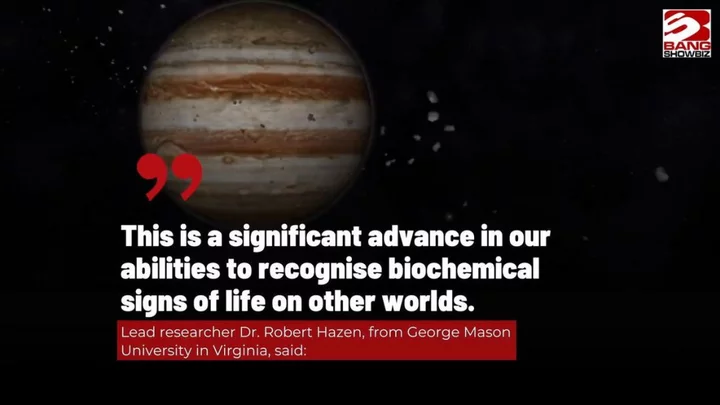
Scientists are using AI to develop simple test to search planets for alien life
Scientists are using AI to search planets for alien life. Researchers writing in the Proceedings of the National Academy of Sciences say artificial intelligence can determine with 90 per cent accuracy whether a sample from another planet is biological or not. Scientists hope that their test could be used on samples already collected by the Mars Curiosity rover’s Sample Analysis at Mars (SAM) instrument. The findings could also help tell us more about our own planet, revealing the history of mysterious and ancient rocks found on Earth. “The search for extraterrestrial life remains one of the most tantalizing endeavors in modern science,” said lead author Jim Cleaves of the Earth and Planets Laboratory, Carnegie Institution for Science, Washington, DC. “The implications of this new research are many, but there are three big takeaways: First, at some deep level, biochemistry differs from abiotic organic chemistry; second, we can look at Mars and ancient Earth samples to tell if they were once alive; and third, it is likely this new method could distinguish alternative biospheres from those of Earth, with significant implications for future astrobiology missions.” The technique was built by giving an artificial intelligent system data about 134 known samples, with information about whether they are biotic or abiotic. To test it, it was then given new samples – including those from living things, remnants of ancient life and other abiotic samples that did not point to life, such as pure chemicals. The system also started predicting another kind of sample type, dividing the biotic ones into “living” and “fossils”. That means it could tell the difference between a freshly harvested leaf and something else that died long ago, for instance. In the future, the technology could become even more advanced and detect other aspects of life. “This routine analytical method has the potential to revolutionize the search for extraterrestrial life and deepen our understanding of both the origin and chemistry of the earliest life on Earth,” said Robert Hazen, of the Carnegie Institution for Science, one of the leaders of the research. “It opens the way to using smart sensors on robotic spacecraft, landers and rovers to search for signs of life before the samples return to Earth.” Sign up to our free Indy100 weekly newsletter Have your say in our news democracy. Click the upvote icon at the top of the page to help raise this article through the indy100 rankings.
2023-10-06 20:46
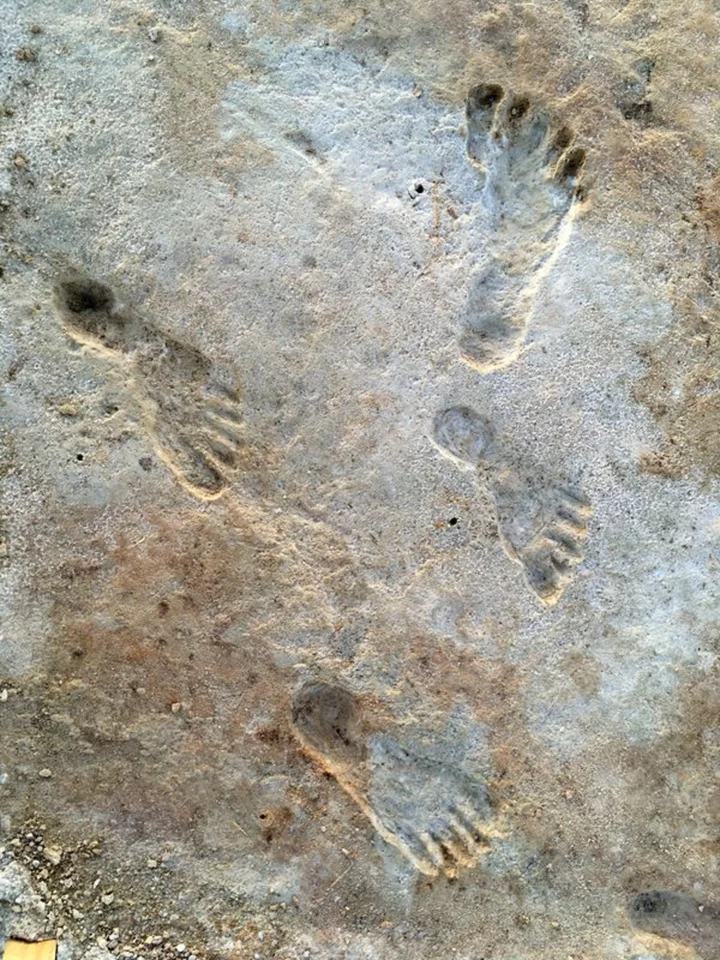
New tests confirm antiquity of ancient human footprints in New Mexico
By Will Dunham WASHINGTON Humans trod the landscape of North America thousands of years earlier than previously thought,
2023-10-06 15:58

Scientists solve 5-year mystery of tiny unidentified 'sea creature'
Scientists have got to the bottom of a 5-year mystery after finally identifying a tiny sea creature captured on camera in 2018. It is the latest in a series of oceanic discoveries and experts recently observed “zombie worms” devour an alligator in an incredible experiment. For the tiny creature, the baffling question of its identity took a team of zoologists and parasitic worm specialists to solve after the small creature was pictured by an underwater photographer in 2018 off the coast of Okinawa in Japan. After photographer Ryo Minemizu captured the image, he shared it on social media asking the hive mind if they knew what the creature was, but everyone was left stumped. Minemizu was determined not to give up and instead went back to the area and was able to capture another ladybird-sized creature that was the same, or very similar, to the original one he had come across. The research team that was interested in identifying the sea creature approached him and Minemizu sent them the sample to research. Your browser does not support the video tag. Current Biology (2023) The team’s results were published in the Current Biology journal putting an end to the 5-year long mystery baffling experts. In a fascinating twist, the team found that the sample was not one, but two creatures that were clinging tightly to one another. Both were identified as types of cercariae parasitic larvae worms, with experts dubbing one as the “sailor” and the other as a “passenger” thanks to how they behave when they are connected. Passengers were much smaller than the sailors and when they were bonded together, they formed a flat-topped hemisphere shape. They squeeze their bodies together with heads facing the inside of the sphere, meanwhile, their tails latch onto one another. Experts believe the two individual creatures have created a colonial organism that suits both of their needs and according to the study's authors, “represents the first case of labor division in digenean larvae”. Sign up to our free Indy100 weekly newsletter Have your say in our news democracy. Click the upvote icon at the top of the page to help raise this article through the indy100 rankings.
2023-10-05 23:26
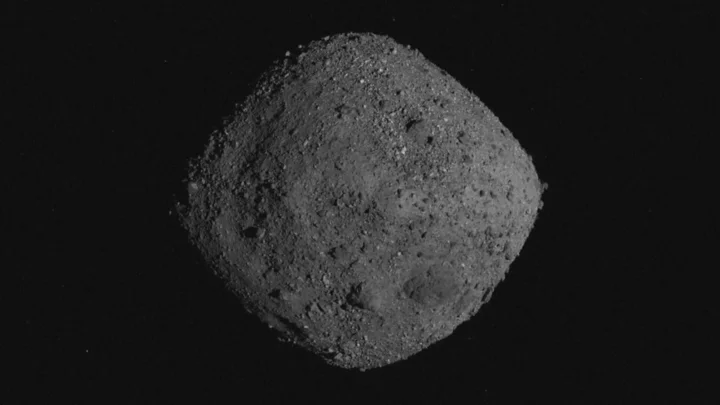
Scientists weren't expecting what they found when they opened up the Bennu asteroid capsule
In late September, scientists at NASA and around the world eagerly awaited the arrival of the OSIRIS-REx capsule containing a sample of the asteroid Bennu. The capsule safely landed on Earth on Sunday 24 September in a Utah desert containing a sample of the asteroid Bennu – categorised as one of the two “most hazardous known asteroids”. When the capsule was first opened, it sparked audible gasps from scientists. Since its arrival, NASA has kept its cards fairly close to its chest but a new blog post from the space agency suggests that progress is going slowly for the “best reason” as there is more sample material than they had anticipated. They explained: “The abundance of material found when the science canister lid was removed earlier this week has meant that the process of disassembling the TAGSAM (Touch-and-Go Sample Acquisition Mechanism) head – which holds the bulk of material from the asteroid – is off to a methodical start.” The OSIRIS-REx’s mission took 7 years to complete, with the sample currently being analysed by NASA taken three years ago before making its way down to Earth. Imagery from the moment the sample was taken confirmed to scientists that there would be asteroid material where they found it, but the quantity of dark particles were far more than they had anticipated. “The very best ‘problem’ to have is that there is so much material, it’s taking longer than we expected to collect it,” said deputy OSIRIS-REx curation lead Christopher Snead of NASA’s Johnson Space Center. “There’s a lot of abundant material outside the TAGSAM head that’s interesting in its own right. It’s really spectacular to have all that material there.” In the coming weeks, experts will continue to work through the particles and begin the complex process of carefully disassembling the TAGSAM to reach the bulk of the Bennu sample inside. Sign up to our free Indy100 weekly newsletter Have your say in our news democracy. Click the upvote icon at the top of the page to help raise this article through the indy100 rankings.
2023-10-05 22:59

Scientists shed surprising new light on the Earth's 'butter-like' inner core
For centuries we’ve been told that the Moon is made of cheese but now, it turns out, the Earth is more like butter. Or, at least, its inner core is. A new study led by experts at the University of Texas (UT) and collaborators in China found that iron atoms at the very centre of our world move around much more than previously thought, and the implications could be huge. Scientists have long sought to dissect the insides of our planet but it isn’t easy, given that we have no way of directly exploring its core. The deepest hole humans have ever dug – branded the "entrance to hell" – extended an impressive 12,263m (40,230ft) down, but even that doesn’t come close to breaking through the crust to the layers beneath. Still, thanks to techniques like seismic tomography – which analyses how waves of energy travel through different materials during earthquakes – we’ve been able to map out the world’s interior. Now, researchers have used lab experiments and AI algorithms to shed a striking new light on the heart of the planet. "Seismologists have found that the centre of the Earth, called the inner core, is surprisingly soft, kind of like how butter is soft in your kitchen," Youjun Zhang, a Sichuan University professor who co-led the investigation, said in a statement shared with Phys.org. "The big discovery that we've found is that solid iron becomes surprisingly soft deep inside the Earth because its atoms can move much more than we ever imagined. This increased movement makes the inner core less rigid, weaker against shear forces." The findings are significant because they could help explain the role that the inner core plays in generating the world’s magnetic field. They could also help us understand a number of the inner core’s key properties, which have long flummoxed experts. "Now, we know about the fundamental mechanism that will help us with understanding the dynamic processes and evolution of the Earth's inner core," Jung-Fu Lin, one of the study's lead authors, explained. Given that it is impossible for scientists to directly extract specimens from the inner core, Lin and his colleagues recreated it in miniature. They took a small iron plate, shot it with a fast-moving projectile, and collected the resulting temperature, pressure and velocity data, which they then fed into an AI computer model. Using this machine learning system, they were able to scale up the sample iron atoms configuration to mimic the atomic environment within the inner core. At this beefed-up scale, the researchers observed groups of atoms moving about while still maintaining their overall structure. Inner Core iron atom motion model University of Texas This movement could explain why seismic measurements of the inner core reveal an environment that's softer and more malleable than would be expected at such pressures, Prof Zhang explained. Around half of the energy that goes into generating the Earth's magnetic field can be attributed to the inner core, with the rest coming from the outer core, according to the UT team. Thanks to Zhang, Lin and their colleagues, we now have a clearer understanding of the inner core’s machinations at an atomic level, which could help inform how energy and heat are generated at the heart of the planet. This could also shed light on how the inner and outer core work together to generate the Earth’s magnetic field – a key ingredient in making a planet habitable. Sign up for our free Indy100 weekly newsletter Have your say in our news democracy. Click the upvote icon at the top of the page to help raise this article through the indy100 rankings.
2023-10-05 19:17

Scientists believe vegetarianism could be in your DNA
Vegetarianism may be written in your DNA, a study has found. According to new research which analysed 5000 vegetarians and 300,000 meat eaters, there are genes associated with how well someone is able to adhere to a vegetarian lifestyle. Researchers identified three genes that are strongly identified and another 31 that are potentially identified with vegetarianism. In a genetic analysis, the researchers saw that vegetarians are more likely than non-vegetarians to have different variations of these genes. This might be because of how different people process lipids, or fats. Several of the genes that the study found to be associated with vegetarianism had to do with metabolising lipids and given plants and meat differ in the complexity of their lipids, it may be that some people genetically need some lipids offered by meat. “At this time we can say is that genetics plays a significant role in vegetarianism and that some people may be genetically better suited for a vegetarian diet than others,” said lead study author Dr. Nabeel Yaseen, professor emeritus of pathology at Northwestern University’s Feinberg School of Medicine. “A large proportion of self-described vegetarians actually report consuming meat products when responding to detailed questionnaires,” he said. “This suggests that many people who would like to be vegetarian are not able to do so, and our data suggest that genetics is at least part of the reason.” Sign up to our free Indy100 weekly newsletter Have your say in our news democracy. Click the upvote icon at the top of the page to help raise this article through the indy100 rankings.
2023-10-05 16:22
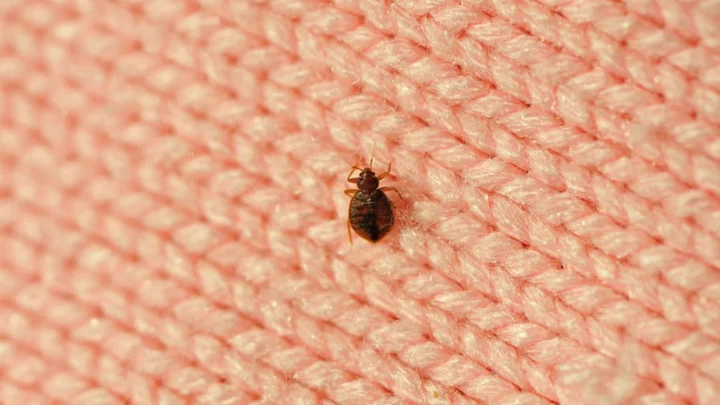
Planning a Vacation? Here’s How to Make Sure You Don’t Bring Any Bed Bugs Home With You
A study shows that bed bugs love dirty clothes. Follow these tips to keep them from hitching a ride home with you.
2023-10-05 04:00
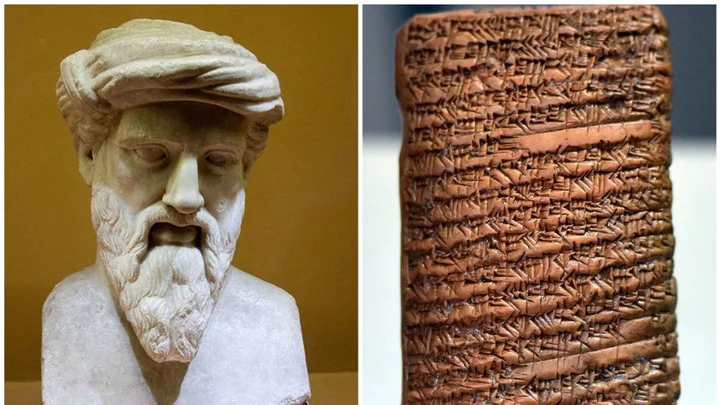
Pythagoras' theorem found on tablet that is 1,000 years older than Pythagoras himself
For many of us, the mere words “Pythagoras’s theorem” are enough to revive pencil-smudged exercise books and desperate attempts to copy classmates’ work. And yet, it turns out the name that has struck dread in countless school kids over the centuries is about as accurate as this writer’s attempts at geometry. Because although it is assumed that the legendary Greek philosopher Pythagoras himself was to thank for the equation a2 + b2 = c2, it turns out it was being used some 1,000 years before his time. Archaeologists have found the equation on a Babylonian tablet which was used for teaching back in 1770 BCE – centuries before Pythagoras’s birth in around 570 BC, as IFL Science notes. Another earlier tablet, from between 1800 and 1600 BC, even features a square with labelled triangles inside. Translations of the markings, which followed the base 60 counting system used by ancient Babylonians, prove that these mathematicians were familiar with Pythagorean theorem (although, obviously, they didn’t call it that) as well as other advanced mathematical principles. In a paper dedicated to the discovery, data scientist Bruce Ratner wrote: "The conclusion is inescapable. The Babylonians knew the relation between the length of the diagonal of a square and its side: d=square root of 2. "This was probably the first number known to be irrational. However, this in turn means that they were familiar with the Pythagorean Theorem – or, at the very least, with its special case for the diagonal of a square [...] more than a thousand years before the great sage for whom it was named." And yet, one key problem remains unsolved: why did the equation become equated with the famous Greek? Well, most likely because Pythagoras wanted it to be. In his paper, Ratner points out that although the Ionian icon is widely considered the first bonafide mathematician, little is known about his specific mathematical achievements. Unlike his successors, he didn’t write any books that we know of, so there’s no written evidence of his work. However, we do have proof that he founded a semi-religious school called the Semicircle of Pythagoras, which followed a strict code of secrecy. As Ratner explained: “Pythagorean knowledge was passed on from one generation to the next by word of mouth, as writing material was scarce. Moreover, out of respect for their leader, many of the discoveries made by the Pythagoreans were attributed to Pythagoras himself. “Consequently, of Pythagoras’ actual work nothing is known. On the other hand, his school practiced collectivism, making it hard to distinguish between the work of Pythagoras and that of his followers. “Therefore, the true discovery of a particular Pythagorean result may never be known.” Still, he stressed, even though Pythagoras wasn’t the brains behind the most famous formula in maths, he does deserve a little credit for putting it on the map. Sign up for our free Indy100 weekly newsletter Have your say in our news democracy. Click the upvote icon at the top of the page to help raise this article through the indy100 rankings.
2023-10-03 19:50

Physics Nobel Prize rewards science on a 'tiny timescale'
This year's Nobel Prize in Physics rewards research into electrons in "flashes of light".
2023-10-03 18:26

Typhoon Koinu on Track to Hit Taiwan, Approach Hong Kong
Severe Typhoon Koinu will pass over the southern tip of Taiwan in coming days before heading toward Hong
2023-10-03 14:50
